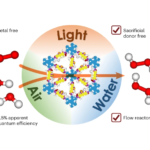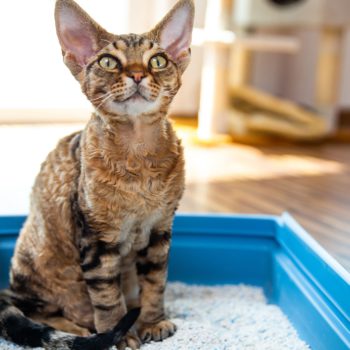|
|
Leather has been a staple material in fashion and craftsmanship for centuries. Traditionally sourced from cows, goats, and other animals, leather has significantly shaped various industries, from haute couture to everyday accessories.
However, as luxurious, durable, and stylish leather is, its conventional production methods often come with ethical and environmental concerns. This, in turn, has prompted the exploration of alternative options. One such material gaining attention for its sustainable properties and unique aesthetic is fish leather.
Join us as we explore fish leather in this article. Discover its beginnings, production process, and how it compares with conventional leather. We’ll also delve into where it’s used and which brands are spearheading its use. Additionally, we’ll look into the latest advancements in fish leather and its prospects as a sustainable material option for the future.
Key Takeaways
- Although leather is traditionally favored for its durability and aesthetic appeal, its production can harm nature and raise questions about animal welfare.
- Fish leather is considered an eco-friendly alternative to traditional leather, utilizing fish skins often discarded in the fishing industry.
- The production process of fish leather involves innovative techniques to tan and treat fish skins.
- Fish leather boasts comparable or superior qualities to traditional leather, including strength and durability.
- Fashion brands and designers are increasingly incorporating fish leather into their products, promoting sustainability in the industry.
Leather and the Dark Side of Its Production
Leather is traditionally favored for various products due to its durability and aesthetic appeal. From clothing and accessories to furniture and car interiors, leather offers a timeless quality that many find irresistible. Its rich texture and ability to age gracefully make it a popular choice among consumers and designers alike.
According to the book Tanning Chemistry: The Science of Leather, the creation of leather is a time-honored craft, dating back over 5,000 years to when the Hammurabi Code (1795-1750 BC) was established. This ancient legal document even specified the earnings for those in the leather industry, highlighting its importance early on in human civilization. The book also pointed out that working with animal skins is one of humanity’s oldest skills, likely only surpassed by the invention of tools.
Leather and its products rank among the most heavily traded items worldwide today. Research from Global Market Insights has shown that the market for leather goods was valued at USD 245 billion in 2022. It is expected to experience substantial growth, with a projected Compound Annual Growth Rate (CAGR) of over 9.5% from 2023 to 2032. This surge is primarily due to an increasing appetite for luxury leather apparel.

Image Source: https://www.gminsights.com/industry-analysis/leather-goods-market
Although the expansion of the leather goods market is positive for the global economy, it raises concerns from environmental and ethical perspectives.
Leather production often involves processes that can harm nature and raise questions about animal welfare. Specifically, the tanning process, which turns hides into durable leather by preserving them and stopping decomposition, relies heavily on chromium, posing significant environmental challenges. Chromium compounds can harm aquatic life and disrupt ecosystems when released into water bodies.
Furthermore, there are health risks for workers and those who live near tanneries, who may be exposed to toxic substances without adequate safety measures. One study revealed that increased risks for several cancers had been reported among tannery workers, including lung cancer, pancreatic cancer, skin cancer and melanoma, kidney cancer, pancreatic cancer, buccal cavity and pharynx cancers, bladder cancer, and sinonasal cancer.
Moreover, raising animals for leather demands vast amounts of water and extensive areas of pastureland. This requirement strains water resources and leads to deforestation and habitat loss as land is cleared to accommodate livestock.
In fact, since the 1960s, there has been a dramatic increase in the number of cattle in the Amazon Basin, growing from 5 million to between 70 and 80 million. This explosion in cattle population has led to significant environmental consequences; approximately 15% of the Amazon forest has been cleared, with about 80% of these deforested areas, roughly 900,000 square kilometers, being converted into pastureland.
The video below, produced by Insider News, offers a glimpse into the traditional tanning operations at a leather manufacturing facility in Bangladesh. It sheds light on the processes involved and gives insights into the effects these practices have on the environment and the health and well-being of people:
Fish Leather: A Sustainable Alternative
The abovementioned issues highlight the extensive environmental footprint and health risks associated with leather production and underline the urgent need for innovative and sustainable alternatives to traditional leather. Enter fish leather, a promising solution that addresses many ethical and ecological concerns associated with cattle farming and conventional leather production. By reimagining waste into worth, fish leather offers a unique opportunity to revolutionize the industry.
Origin
Fish leather, also called piscine or fish skin leather, is an innovative and sustainable material created from the skins of fish, which are typically by-products of the seafood industry. Rather than discarding these skins, they are processed and transformed into durable, flexible, and visually striking leather.
The practice of making fish leather is not new. It boasts a rich historical legacy deeply embedded in the traditions of Indigenous craftsmanship. Long before the advent of synthetic materials, communities from coastal and riverine areas globally harnessed fish skins’ strength and water-resistant properties. This material was not just a resource; it was vital for survival.
As highlighted by Hakai Magazine, various cultures have creatively adapted fish leather to meet their needs. In Japan, the Ainu people transformed salmon skins into durable boots fastened with rope. The Hezhen and Nivkh peoples along the Amur River in northeastern China and Siberia crafted the material into coats and thread, essential for withstanding harsh climates. In the farther north of Canada, the Inuit utilized fish leather to create protective clothing. Similarly, the Alutiiq, Athabascan, and Yup’ik communities made boots, mittens, containers, and parkas out of fish skins in Alaska.
A particularly striking use of fish leather was by the Yup’ik people, who designed qasperrluk—hooded fish skin parkas crucial for winter survival. These garments were ingeniously designed to double as emergency shelters. In times of need, a man could prop up the hood with an ice pick and secure the edges to form a tent-like structure, showcasing the material’s versatility and life-saving qualities.
Species
Fish leather is crafted from various fish species, with salmon and perch frequently chosen due to their suitable properties and availability. However, the scope of materials extends beyond these two, incorporating other fish like cod, tilapia, catfish, and even the luxurious sturgeon.
The factors influencing this choice include the fish’s availability in certain regions, making it easier to source and more sustainable to use. Sustainability is a critical aspect, as it ensures that the production of fish leather contributes positively to the environment by minimizing waste and not depleting fish populations.
Additionally, different species provide unique textures and colors to the leather produced. For instance, salmon skin might offer a more subtle texture and color palette, while sturgeon can result in a more distinguished pattern akin to traditional exotic leathers. This diversity allows for a wide range of applications and aesthetics in products made from fish leather, catering to various tastes and design requirements.
Production
Producing fish skin leather is notably more environmentally friendly than the traditional methods of creating conventional leather. This gentler approach encompasses less aggressive chemicals and uses fewer resources, aligning with efforts to minimize environmental impact.
Although the specific techniques employed by the limited number of tanneries specializing in fish leather remain closely guarded secrets, the general methodology is known to be more eco-friendly.
Typically, the process begins with soaking the fish skins in a specialized concoction of natural and less harmful substances. This soaking period is crucial for eliminating the skins’ inherent fishy odors and oils. From there, the skins are dried and tanned using eco-friendly tanning agents, preserving and strengthening them for transformation into leather.
Once tanned, the fish leather can be dyed in various colors, offering a wide range of aesthetic options. This is followed by a finishing process, where the leather might be coated to enhance its durability and waterproofness or to add a glossy or matte finish, depending on the desired outcome.
The final steps involve conditioning to ensure the leather remains supple and softening treatments to enhance its tactile qualities. These processes are essential for ensuring the fish leather looks exquisite and feels luxurious.
Fish Leather vs. Traditional Leather
When comparing fish leather to traditional leather, several vital differences emerge, chiefly regarding their environmental impact, production process, durability, texture, and applications.
- Environmental Impact: Fish leather offers a more sustainable alternative, primarily because it repurposes waste from the fishing industry, reducing pollution and promoting efficiency in resource use. Traditional leather, on the other hand, often involves deforestation and significant water use for livestock farming, alongside the heavy use of chemicals in tanning.
- Production Process: Making fish leather is considered gentler and more eco-friendly. It generally eschews harsh chemicals like chromium, which are used extensively in conventional leather tanning, opting instead for more natural substances. This not only minimizes toxic waste but also lessens water pollution. Traditional leather production is known for its more aggressive chemical usage, contributing to environmental degradation.
- Durability: Fish leather is surprisingly stronger than its traditional counterparts. It boasts a durability that is nine times greater than that of cow or lamb leather despite having a thickness that’s quite comparable. This impressive strength is primarily attributed to the unique structure of fish skin. Unlike the parallel fiber arrangement found in conventional leathers from cows or lambs, the fibers in fish skin crisscross. This crisscross pattern naturally reinforces the material, enhancing tensile strength and resistance to wear and tear. Hence, fish leather is an exceptionally robust choice for items where durability is critical, such as handbags, footwear, and wallets.
- Texture and Appearance: Fish leather is prized for its unique texture and pattern, which vary depending on the fish species used. These can range from the subtle elegance of salmon to the pronounced grain of sturgeon. Traditional cowhide leather offers a more uniform texture and is less varied in appearance, though it provides a classic look that many consumers and manufacturers prefer.
- Applications: Both types of leather are versatile and can be found in fashion, accessories, and even upholstery. However, the distinctive looks of fish leather allow for unique design opportunities in high-end fashion and luxury goods, appealing to those seeking an exotic or novel aesthetic without the ethical concerns associated with other exotic leathers.
Brands Making and Embracing Fish Leather
According to Straits Research, the global fish leather market is experiencing significant growth, with its valuation at USD 103.0 million in 2023. It’s set to expand to USD 133.2 billion by 2032, achieving a Compound Annual Growth Rate (CAGR) of 2.9% from 2024 to 2032. This upward trend is expected as the demand for sustainable and unique materials within the fashion and design industries continues to rise.
The increasing interest in fish leather is part of a more significant trend towards sustainability and ethical consumerism sweeping across global markets. Consumers today are more conscious of the environmental impact and ethical standards behind their purchases, especially within the fashion industry. This shift in consumer behavior is prompting fashion brands and manufacturers to explore more eco-friendly and socially responsible materials, with fish leather emerging as a standout choice.
The pioneering brands below are making strides in promoting this innovative material and shaping sustainable fashion’s future.
- Atlantic Leather: Located in Iceland, Atlantic Leather is at the forefront of fish leather production, turning the skins of salmon, perch, cod, and wolfish into luxurious, vibrant leathers. The company’s innovative tanning process is known for its environmentally friendly approach, attracting top-tier fashion houses, such as Dior and Prada, seeking sustainable yet sophisticated materials.
- Nova Kaeru: This innovative Brazilian company is known for its exotic bio-leathers, including fish leather, which are used across luxury fashion, automotive interiors, and more. Its commitment to biodiversity and sustainability has made it a key player in the eco-friendly materials market.
- FISHSKINLAB: A pioneer in research and development, FISHSKINLAB explores the applications of fish leather beyond fashion, including in architecture and design. By investigating new uses for fish leather, FISHSKINLABS aims to broaden the scope of this sustainable material, making it more accessible and appealing across various industries.
- Nanai: Renowned for its salmon leather, Nanai stands out with its commitment to an eco-friendly tanning process that is entirely chrome-free. The German-based company proves that high-quality, luxurious leather can be produced harmoniously with nature, offering a viable alternative to conventional leather.
- Inversa: As a brand dedicated to overturning traditional notions about sustainable materials, Inversa incorporates fish leather into avant-garde designs that challenge the status quo. Its bold use of fish leather emphasizes the material’s aesthetic versatility and its role in sustainable innovation.
- Ecodunia: Focusing on social impact as much as environmental sustainability, Ecodunia promotes fish leather to uplift local communities while offering the market a sustainable material choice. Its products bridge the gap between traditional craftsmanship, modern fashion, and sustainability.
- James&Co Ethical Vegan Apparel: Specializing in cruelty-free outerwear, James&Co leads by example ethically. The brand’s use of fish leather aligns with its mission to provide stylish, eco-conscious alternatives to traditional animal leathers.
- Osklen: Brazil’s Osklen is another emblem of sustainable fashion, embracing fish leather. By integrating this material into its eclectic range of apparel and accessories, Osklen highlights fish leather’s versatility and aesthetic appeal.
- SeaSkin Morocco: With a mission to protect the environment and contribute to solving the significant waste problem in the fishing industry, SeaSkin Morocco specializes in transforming discarded fish skins into natural fish leather, used to craft exquisite handmade accessories. What distinguishes this woman-led social enterprise is its commitment to sustainable practices, particularly highlighted by its dry tanning process. This method conserves a substantial amount of water—saving up to 90% compared to traditional industrial tanning processes employed by larger corporations.
Aside from the brands mentioned above, smaller manufacturers, artisans, and designers globally are exploring fish leather for its unique properties and sustainability story. From handmade wallets and purses to bespoke shoes and even jewelry, these creators demonstrate the broad potential of fish leather across various segments of the fashion industry.
Fish Leather Challenges
The fish leather industry holds great potential for a greener future but faces several hurdles due to its emerging status. This situation presents both possibilities and challenges.
| Challenge | Description |
|---|---|
| Consumer Perception | The notion of wearing products made from fish skin may initially seem unappealing to some consumers. Overcoming this perception requires educating the market about fish leather’s durability, beauty, and eco-friendly nature. |
| Cost Considerations | Fish leather is a premium product, costing up to USD 380 per square meter. This price disparity, almost 3.5 times higher than traditional cow leather, stems from the artisanal scale of fish leather production. The small-scale manufacturing processes and meticulous care needed to produce high-quality fish leather contribute to its higher price point. |
| Geographical and Economic Factors | Leading fish leather tanneries face the challenge of high operational costs attributed to their locations in countries with significant labor expenses. This geographical factor influences the overall cost of fish leather, affecting its competitiveness in the global market. |
| Supply Chain Complexities | Despite the abundance of fish skins as a byproduct of the seafood industry, securing a steady supply is complex. The preference for selling fish with skin-on limits the availability of raw materials. Innovative sourcing strategies, such as partnering with local fish-smoking operations, are essential for overcoming this hurdle. |
| Sourcing Eco-friendly Tanning Agents | The quest for sustainable tanning agents poses another challenge. The reliance on imported plant-based tannin powders, often sourced from distant regions like South America, contrasts with the sustainable ethos of fish leather production. Developing local sources of tannins, such as utilizing waste from cider production or forestry byproducts, represents a sustainable, though challenging, path forward. |
| Educational Efforts and Market Development: | A crucial aspect of addressing these challenges lies in educating consumers and stakeholders about the benefits of fish leather. This involves showcasing its strength, versatility, and the positive environmental impact of its production process. Creating a more robust narrative around fish leather can also help shift consumer perceptions and open new markets. |
| Innovation and Collaboration | Innovation in production techniques and collaboration within the industry can lead to more cost-effective processes and broader acceptance of fish leather. Exploring new methods for scaling production without compromising quality or sustainability is vital to reducing costs and enhancing market accessibility. |
Innovations and Future Outlook in Fish Leather
As the fish leather industry evolves, it’s becoming a hotbed for creativity and technological advancement. Entrepreneurs and researchers are breaking new ground with innovative methods to refine the tanning process and enhance fish leather’s quality. Research projects funded by entities like the European Union fuel breakthroughs in eco-conscious production techniques. These efforts aim to lessen environmental footprints while maximizing available resources.
Furthermore, exciting collaborations are emerging between indigenous artisans, known for their centuries-old fish leather techniques, and contemporary designers. This fusion helps preserve invaluable cultural traditions and aligns with modern demands for sustainability.
These advancements highlight fish leather’s rising star in the fashion world as an environmentally friendly substitute for traditional materials. Its journey from ancient craft to sustainable luxury showcases the potential for traditional knowledge to meet innovation, setting a promising path forward for the industry.
Conclusion
Fish leather represents a sustainable and innovative solution to the environmental challenges associated with traditional leather production. Fish leather minimizes environmental impact by utilizing fish skins often discarded as waste while offering comparable or superior qualities to conventional leather. With its unique texture, strength, and aesthetic appeal, fish leather is gaining popularity among fashion brands and designers seeking eco-friendly alternatives.
As the industry continues to evolve and innovate, fish leather promises to play a significant role in shaping the future of sustainable fashion and craftsmanship. Embracing fish leather supports environmental conservation and celebrates traditional craftsmanship’s rich cultural heritage and ingenuity.
Frequently Asked Questions
Yes, fish leather is generally considered ethical and environmentally friendly. Utilizing fish skins that would otherwise be discarded as waste helps reduce the seafood industry’s environmental impact. Moreover, advancements in sustainable tanning techniques further enhance its eco-friendly profile.
While fish leather is biodegradable, the presence of tanning agents and finishing treatments may impact its compostability. However, efforts are being made to develop more sustainable end-of-life solutions for fish leather, such as recycling programs and eco-friendly disposal methods.
Ethical considerations in fish leather production primarily revolve around ensuring responsible sourcing practices and humane treatment of animals. Manufacturers must prioritize ethical sourcing of fish skins and adhere to animal welfare standards throughout production. Additionally, transparency and traceability in the supply chain are essential for maintaining ethical integrity.
While fish leather is derived from animal skins, it is not typically considered vegan or cruelty-free due to its animal origin. However, some argue that using fish skins that are byproducts of the seafood industry can be more ethical and sustainable than using skins from animals specifically raised for leather production. Consumers must research and consider their ethical values when choosing products made from fish leather.
Yes, fish leather is naturally water-resistant to some extent, thanks to the unique composition of fish skin. However, the level of water resistance can vary depending on the tanning process and any additional treatments applied to the leather. Proper care and maintenance can help preserve and enhance its water-resistant properties over time.
Products made from fish leather can be found in various fashion and accessory stores and online marketplaces specializing in sustainable and eco-friendly goods. Look for brands that prioritize ethical sourcing and environmentally conscious manufacturing practices to ensure you’re purchasing genuine fish leather products.












